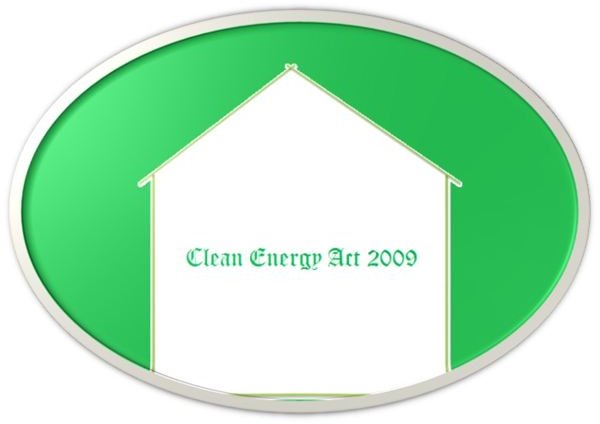34 Nobel Laureates Wrote Obama on Climate and Energy in 2009 - So Where are We Now?
On July 16, 2009, Burton Richter, Nobel Prize awardee in Physics, and thirty-three other Nobel laureates wrote to President Obama about their concern
over the need for clean energy investment funding in the US.
Instead of any increase in funding, the Senate decided to cut the R&D budget for clean energy development by almost 60%, well short of President Obama’s plan of spending $150 billion in the next ten years. The President could not convince the House of Representatives about the need of clean energy in the future. The final version of the passed bill was totally different than what it was actually meant to be. The government shifted its focus from R&D works to distributing free licenses, mainly to existing electricity and natural gas utilities.
The laureates focused on the need for empowering research with funds and equipment so that the country could come up with the best ways to reduce emissions and provide alternatives to conventional energy sources. Europe and China were marching ahead with their clean energy drives whereas the US government was focusing on distributing freebies to industries and corporations.
Here are some of the signees.
- John Mather, Physics 2006
- George Smoot, Physics 2006
- Frank Wilczek, Physics 2004
- Paul Berg, Physics 1980
- Johann Deisenhofer, Chemistry 1988
American Clean Energy and Security Act (ACES) 2009
The American Senate passed the Waxman-Markey bill on June 26, 2009 with 219 votes for and 212 votes against. It was seen as a better version of the Lieberman-Warner Climate Security Act, which died in the senate after a short debate in 2008, disappointing many people and a global audience.
Major provisions of Waxman-Markey bill were:
- Setting a cap on maximum emissions of greenhouse gases for companies. The cap will be gradually reduced in coming years so that the threats of environmental pollution and greenhouse gases can be reduced.
- Subsidized clean energy research programs and approved spending $90 billion as subsidies for the renewable energy sector by 2025. Carbon capture and sequestration were given a provision of $60 billion.
- Focused on the target of reducing America’s greenhouse emission by about 80% by 2020. The short-term target was reducing GHGs by 17% initially.
- Protected consumer interests by not allowing the energy price increases to affect their budgets.
- Allowed companies to benefit from allowances under the emission Cap and Trade program.
- Provided basic scientific research spending of $20 billion.
The scientists were expecting a huge budgetary allocation for the R&D work, but the final version of the bill disappointed them. Spending only $20 billion meant waiting another ten years to achieve clean energy for the US. The meager budgetary allocation for R&D works was in stark contrast with President Obama’s original (campaign) proposal of making the US a clean energy country by 2021.
Status of the Bill in 2011
The media reported this bill to be a victory for President Obama and a revolutionary step in establishing healthy climate change legislation.
However, the current status of this bill is that it will never become a law, at least not during the term of the present government. Republicans unanimously opposed this bill, and currently the bill is removed from the books after the last session of the congress. The bill may or may not turn up in next session of the congress for debate. The requests of the scientists have not been approved by the government and like many other bills and acts, this bill has also become almost forgotten and gathering dust for quite some time. It made ambitious claims about making America a clean energy state by 2050 and reducing greenhouse emissions by as much as 83%, but nothing of that sort is happening as of now. In place of that, a new tri-partisan bill is currently being debated by Senator Joe Lieberman and Senator John Kerry.
ACES 2009 - The Timeline
-
ACES Act passed by the House Energy and Commerce Committee - 21 May, 2009
-
The Waxman-Markey (ACES) bill passed by the House - 26 June 2009
-
34 Nobel Laureates write to the President Obama regarding their concerns - 16 July 2009
-
The term “Cap and Trade” abolished, Interior Sec. Ken Salazar addresses the press with regard to Climate Change Legislation - 31 March, 2010
And that is the latest anyone has heard of the ACES Act. The furor created by media has now settled down and the new climate legislation has been put forward in the Senate. If that is better than the previous acts or not, only time will tell. In the meantime, the Environment Protection Agency has proposed bringing the greenhouse emissions under the Clean Air Act, which is less flexible than the ACES Act.
References
ACES Act 2009, Waxman -Markey, https://www.govtrack.us/data/us/bills.text/111/h/h2454pcs.pdf
34 Nobel Prize Winners Write President Obama Urging Support for Clean Energy R&D, Thebreakthrough.org
ACES Act 2009, https://www.govtrack.us/congress/bill.xpd?bill=h111-2454
